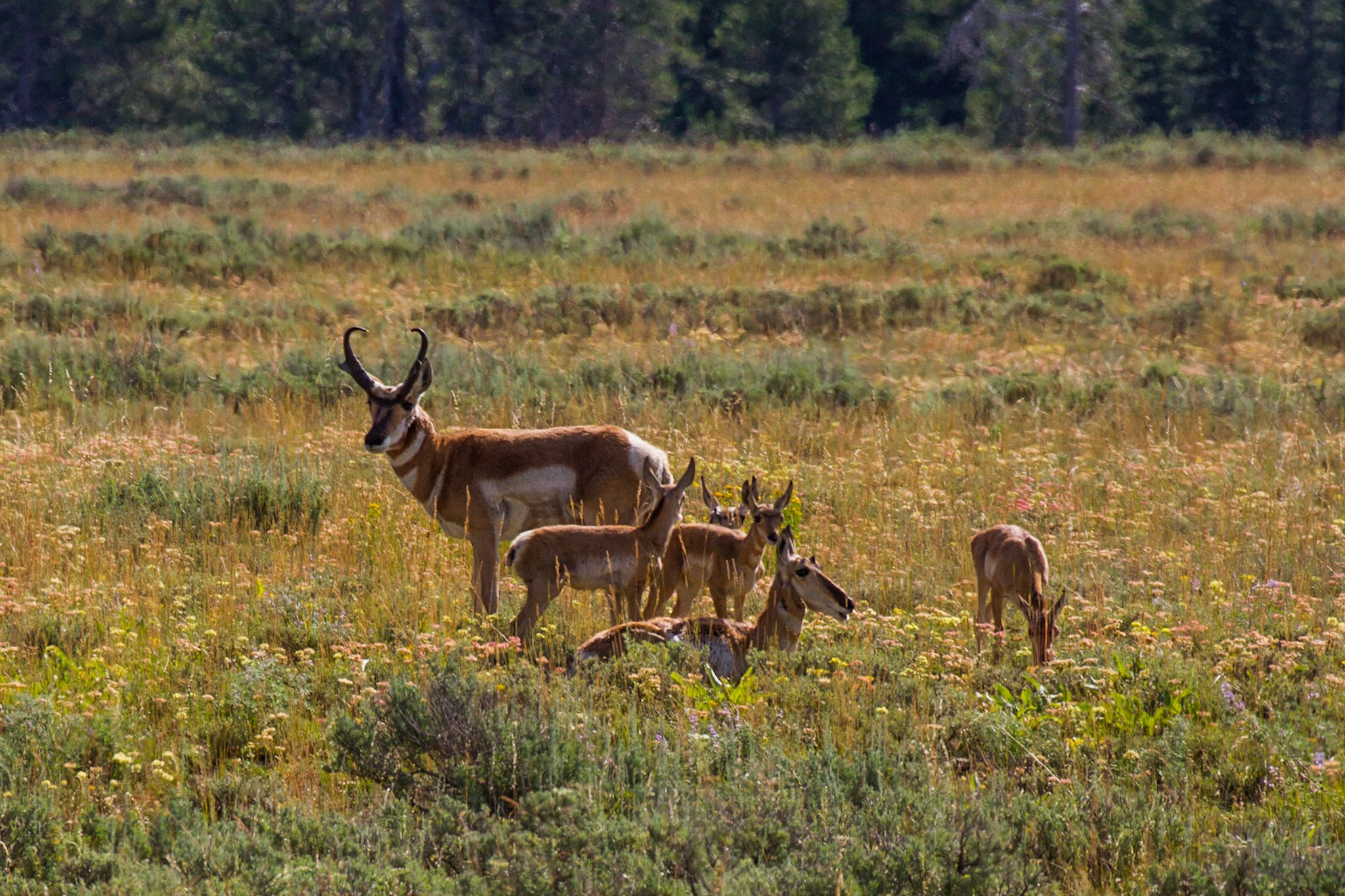This Spring, Plan a Safari to Spot Baby Animals

'Josh Metten/Jackson Hole Eco Tour Adventures'
Thirty four-year-old Josh Metten says that seeing wild animals in Rocky Mountain National Park with his family when he was young inspired him for life. “Hearing a 700-pound antlered animal bellowing out its call and watching bugling elk were truly unforgettable experiences for me,” he says. “It’s what set me on a course to study natural resources management at Colorado State University.” Today, Metten works as a naturalist and tour guide with Jackson Hole Eco Tour Adventures, leading wildlife viewing trips through Grand Teton and Yellowstone National Parks.
March 20th marked the first official day of spring, and with the new season comes a plethora of newborn wildlife. If your child has stuffed animals (and what kid doesn’t) spotting animals—and baby animals, at that—is a sure bet to get them excited about spending time outside.
Metten shared the following tips on how to take advantage of nature’s wonders, particularly in the spring when newborn animals from fawns (deer and pronghorn) to kits (beavers, foxes, rabbits, raccoons, skunks, and squirrels) make us say, “aww” and inspire the entire family to spend more time in nature.
Do not disturb. Whether you’re viewing wildlife from the trail or from roadside pullouts, it is critically important for the safety of both your family and the animals to keep your distance. The general rule of thumb is to give creatures like deer and foxes 25 feet of distance and predators like bears and wolves 100 feet. “Try to keep quiet,” Metten says. “Stay as a group and avoid making sudden movements. And move out of the way if animals approach.”
Know where to go. Local trails on public lands can be great for spotting animal activity, but you’ll increase your likelihood by visiting wildlife refuges and national parks, where animals are protected and abundant. Metten says that there is a wildlife refuge within an hour of most major cities. Check out this locator map to find one near you.
National parks are less crowded in the springtime than the summer, making them ideal for family visits and animal viewing. Metten recommends Grant Teton and Yellowstone National Parks. “In May, bison calves have been born, many owls and eagles have nestlings, and songbirds are returning to the eco-system,” he says. “Grizzly and black bear cubs become visible, and at the end of May, moose, deer and elk calves are born. In May and June, wolf pups emerge from dens in places like Yellowstone’s Lamar Valley. And there’s also pronghorn antelope, foxes, badgers, sandhill cranes, and a diverse assortment of birds.”
“Sometimes amazing wildlife and their babies are hiding in plain sight,” says Metten. New York’s Central Park, for example, has an extremely high concentration of peregrine falcons.
Know when to go. The best time to spot wildlife (and their babies) is at dawn or dusk, when most animals are out feeding. You will have to weigh diminishing returns for waking children up early to spot animals, but going on a drive at dusk can be both a good way to have kids wind down and spot animals.
Look for signs of life. Metten says to keep an eye out for home bases, like dens and daybeds. “Grass flattened down usually means animals are in the area,” he says. “And watch adult birds. See where they fly.”
Buy good binoculars. For optimal viewing even from a distance, invest in a pair of quality binoculars. Metten and Eco Adventure Tours use Maven Optics B.1 binoculars, but also like Zeiss Optics Conquest. Other good options include Maven Optics C.2, which are relatively small and lightweight for little hands.
Play the name game. See how many of the following parent-child pairs you are your kiddos can identify this spring.
| Adult Name | Baby Name |
| Beaver, rabbit | Kit |
| Coyote | Pup or whelp |
| Fox | Cub, pup, or kit |
| Squirrel | Pup or kit |
| Deer | Fawn |
| Eagle | Eaglet |
| Owl | Owlet |
| Snake | Snakelet |
| Bison, elk, and moose | Calf |
| Porcupine | Porcupette |
| Opossum | Joey |
| Goose | Gosling |
| Heron | Chick |
| Hawk | Eyas |